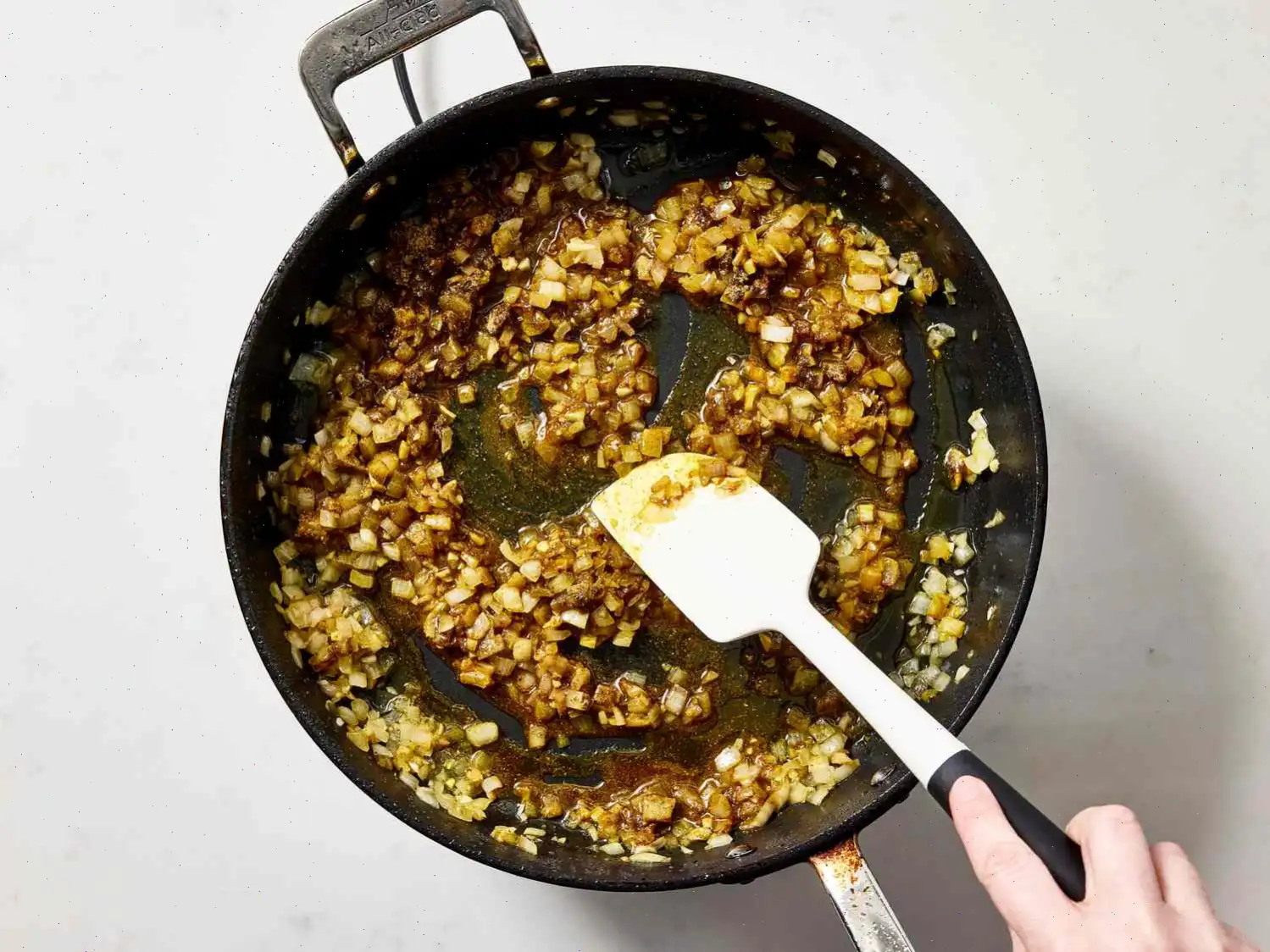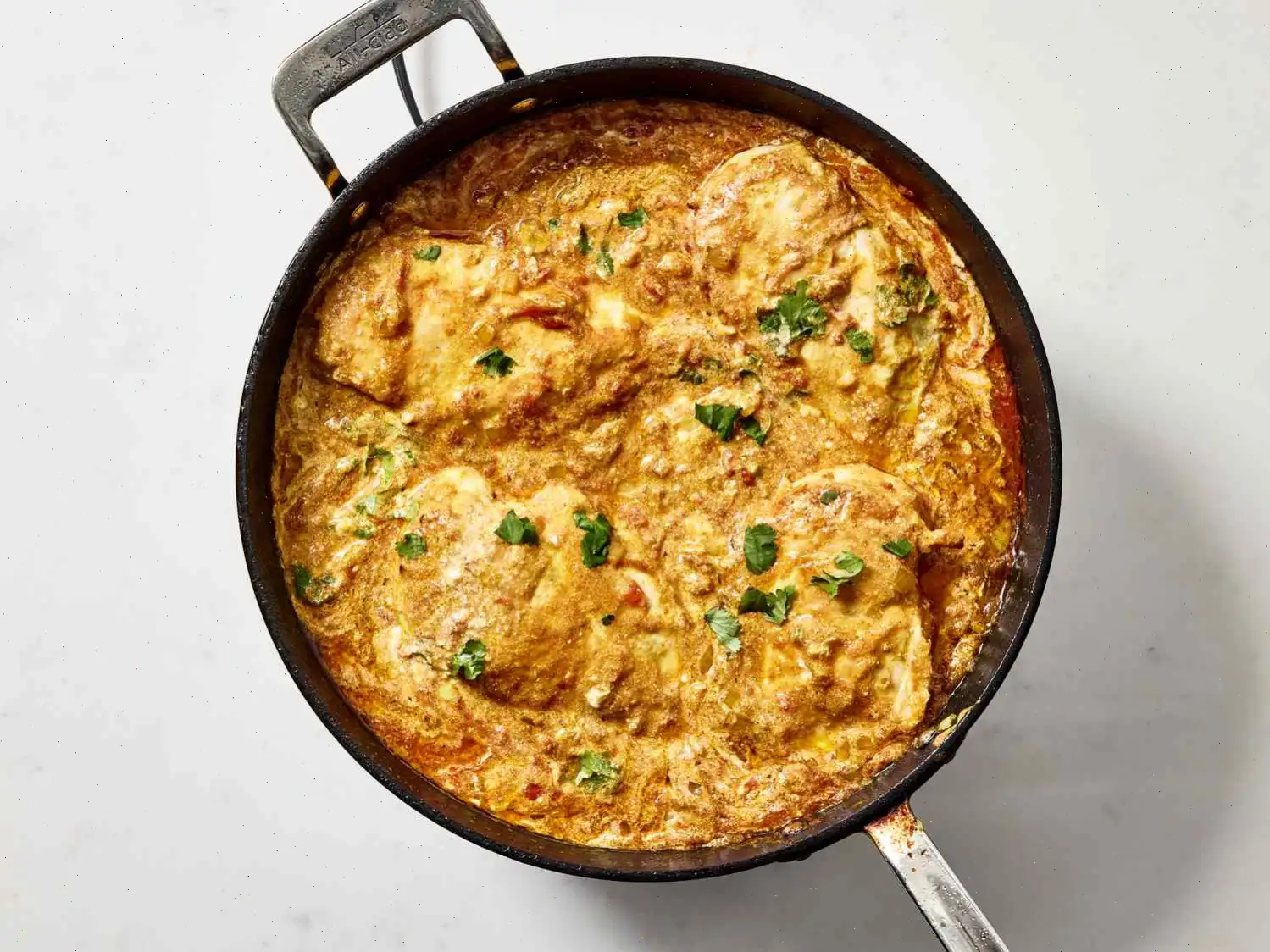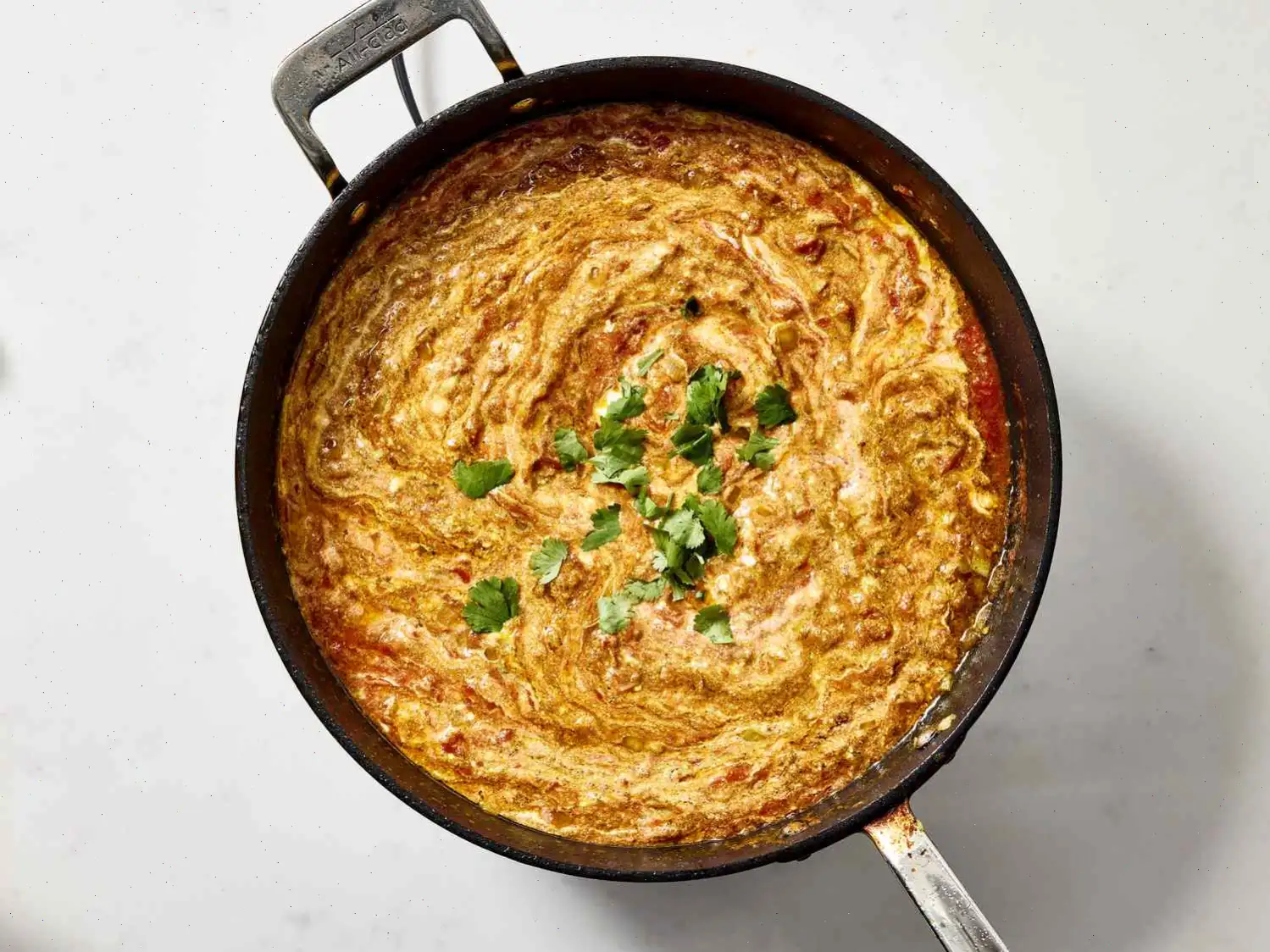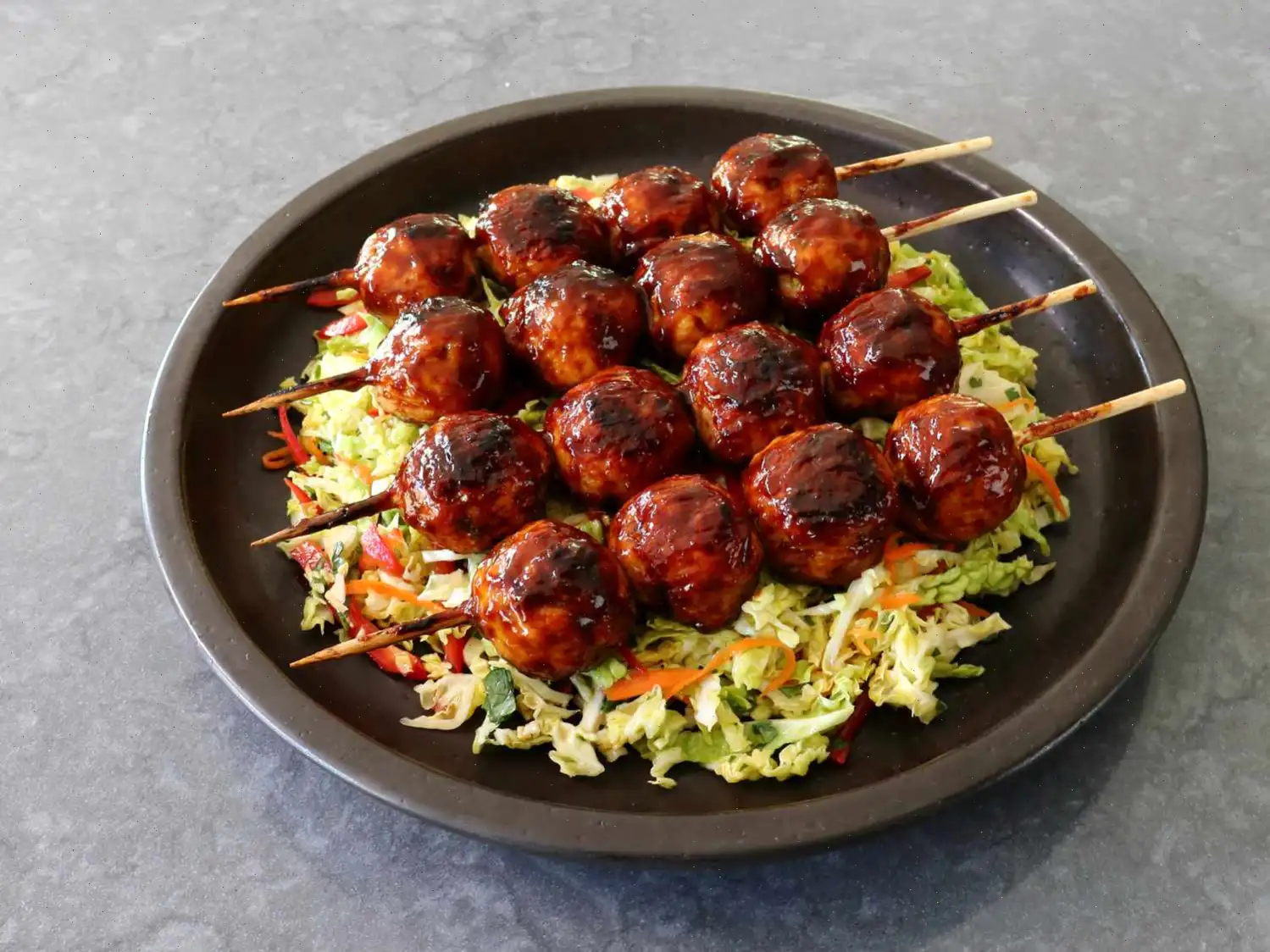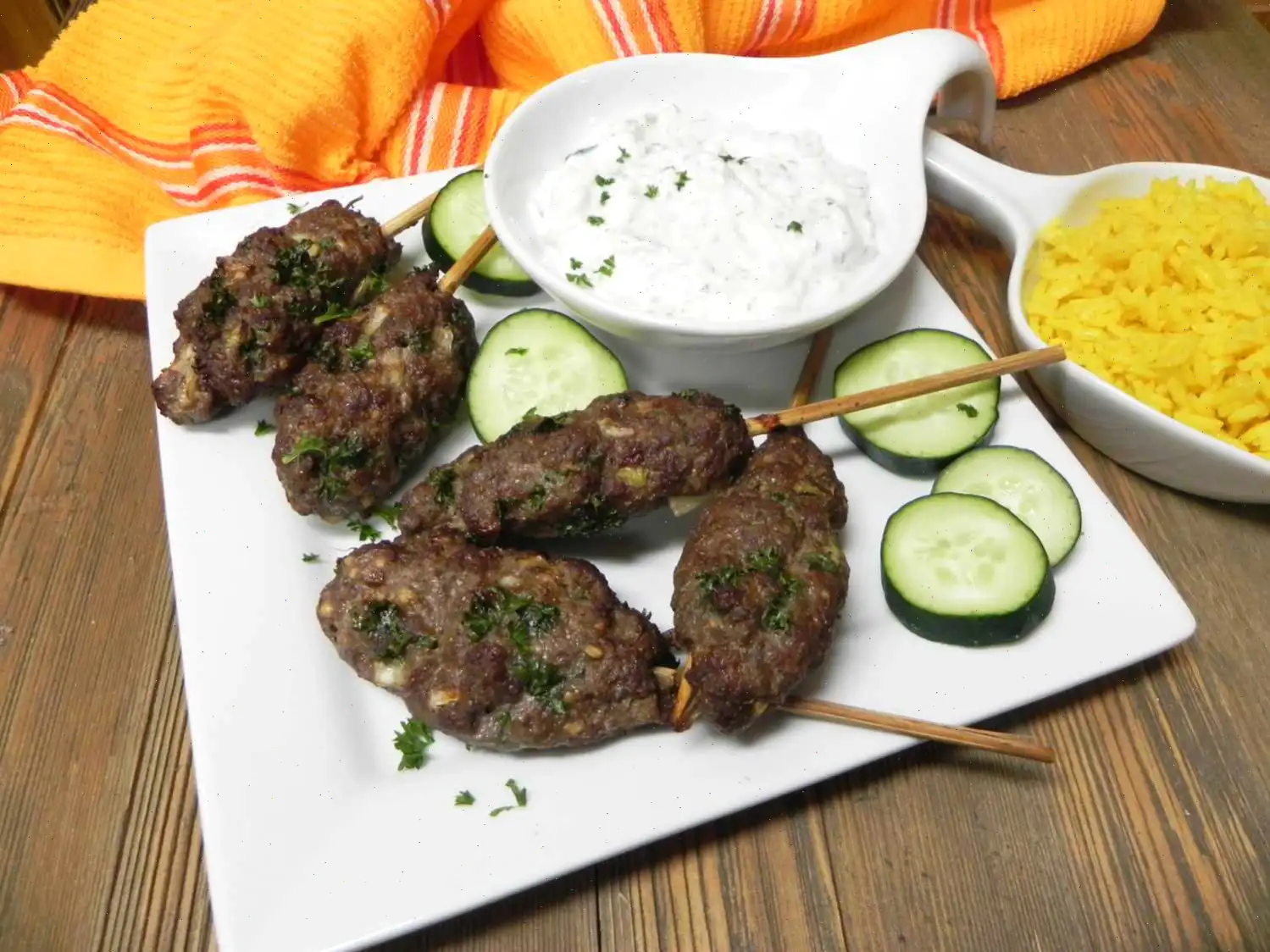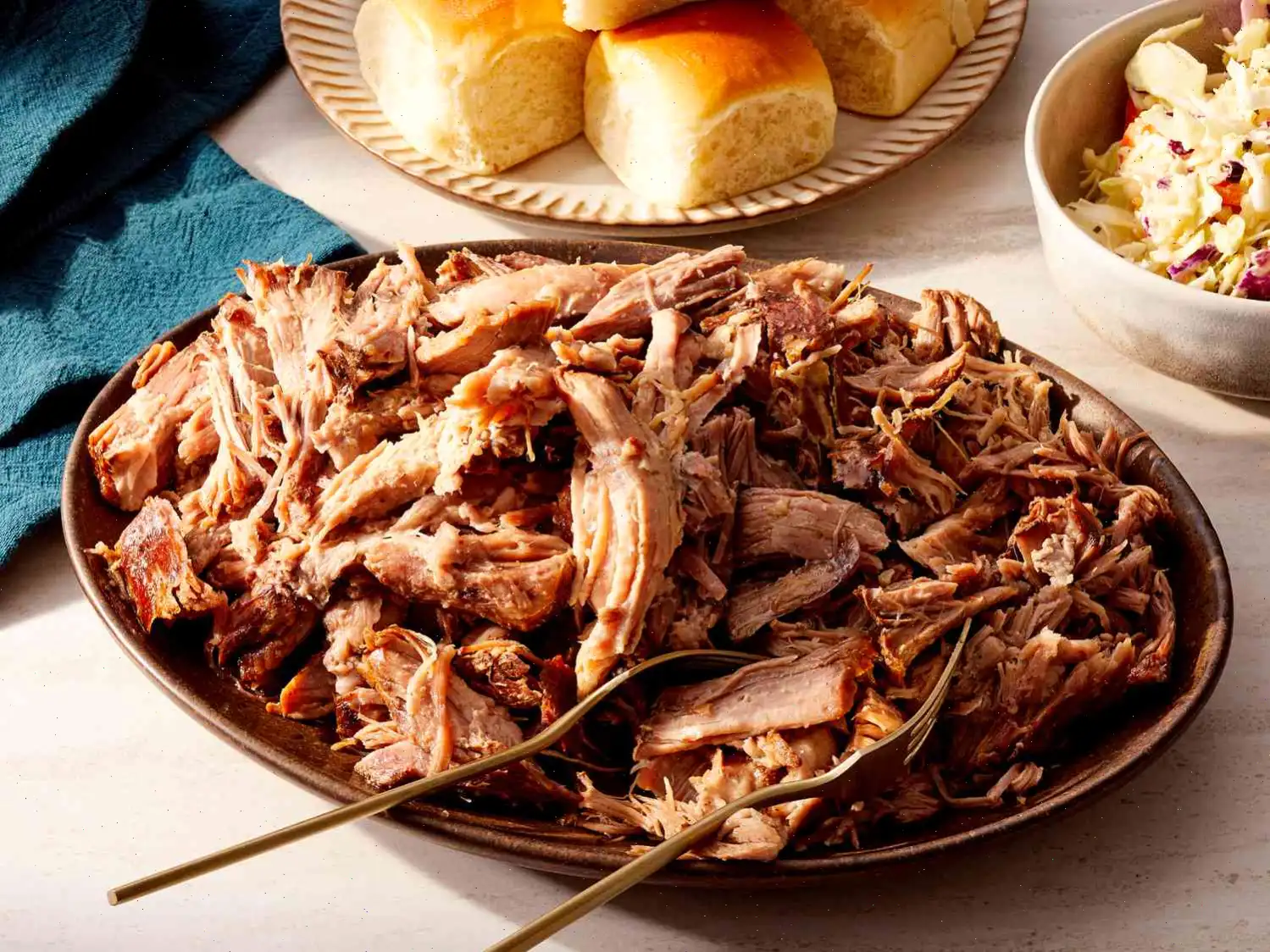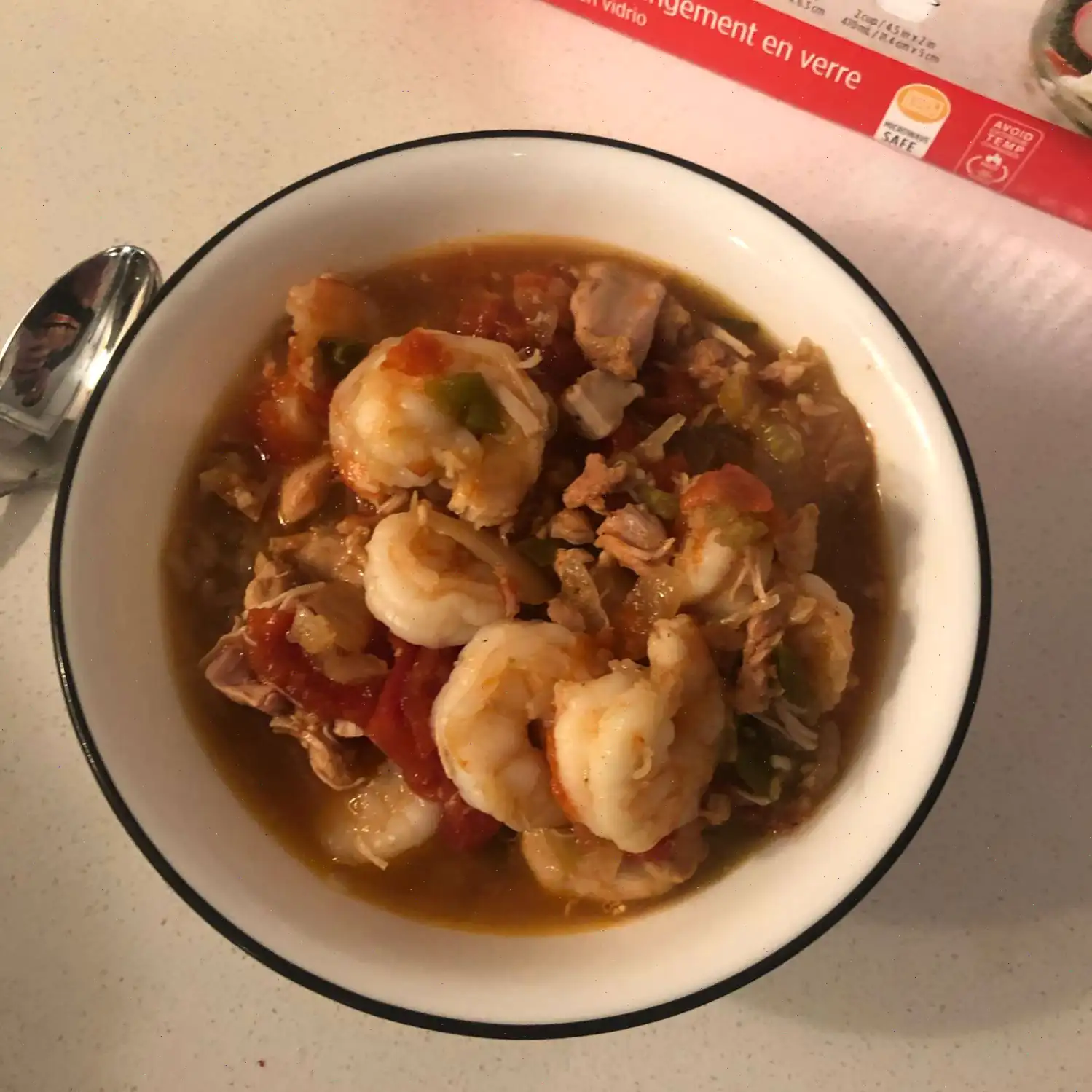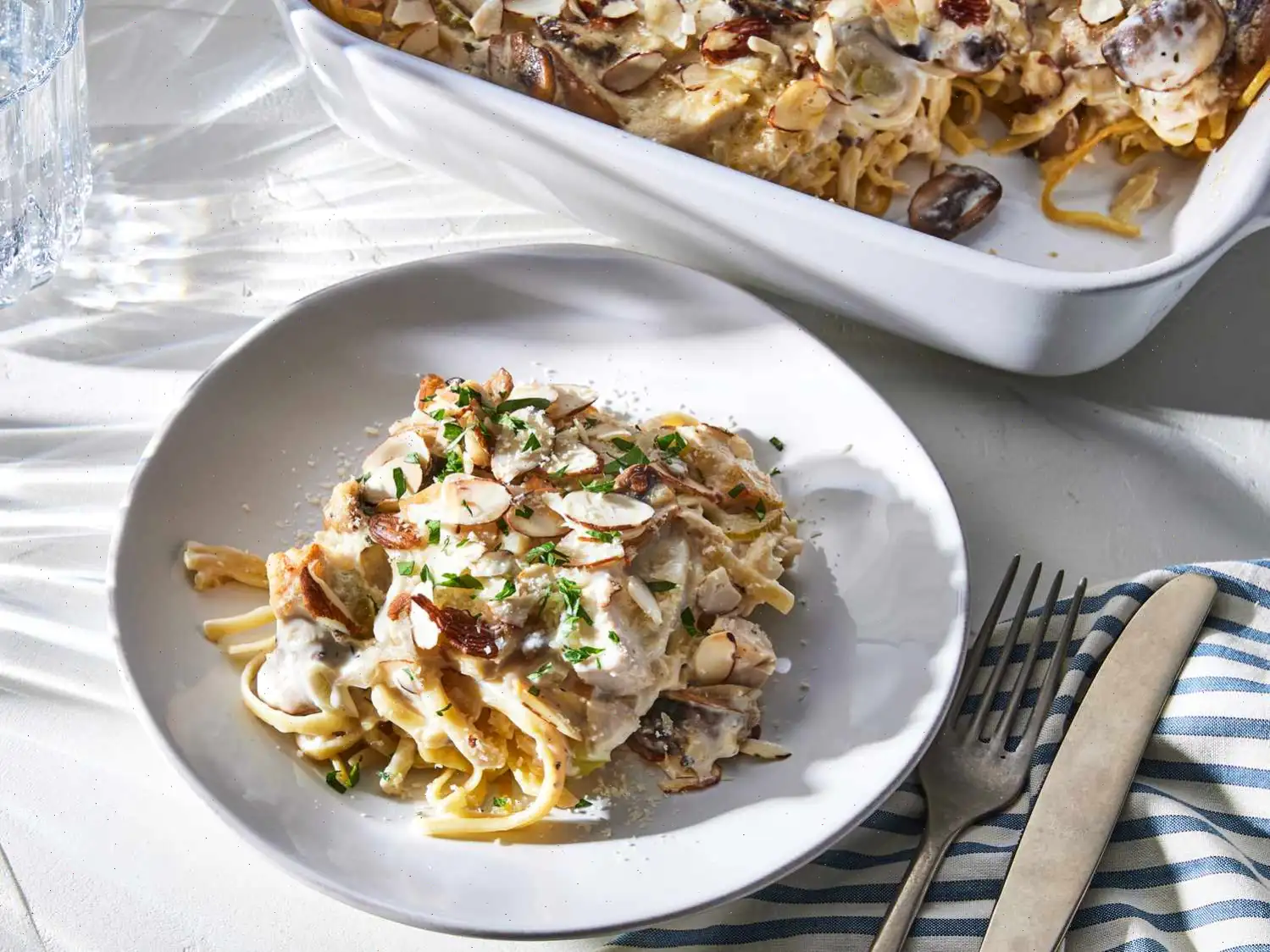
Indian Chicken Curry (Murgh Kari) Recipe
Ingredients
This recipe was developed at its original yield. Ingredient amounts are automatically adjusted, but cooking times and steps remain unchanged. Note that not all recipes scale perfectly.
- 2 pounds skinless, boneless chicken breast halves
- 2 teaspoons salt
- cup cooking oil
- 1 cups chopped onion
- 1 tablespoon minced garlic
- 1 teaspoons minced fresh ginger root
- 1 tablespoon curry powder
- 1 teaspoon ground cumin
- 1 teaspoon ground turmeric
- 1 teaspoon ground coriander
- 1 teaspoon cayenne pepper
- 1 tablespoon water
- 1 (15 ounce) can crushed tomatoes
- 1 cup plain yogurt
- 1 tablespoon chopped fresh cilantro
- 1 teaspoon salt
- cup water
- 1 teaspoon garam masala
- 1 tablespoon fresh lemon juice
Directions
- Gather all the ingredients.
- Sprinkle the chicken breasts with 2 teaspoons salt. Heat the cooking oil in a large skillet over high heat. Cook the chicken breasts in batches, partially cooking them until they are completely browned on all sides. Once browned, transfer the chicken to a plate and set it aside.
- Reduce the heat to medium and add the chopped onion, garlic, and minced ginger to the skillet, using the remaining oil. Cook and stir until the onion turns soft and translucent, around 5 to 8 minutes.
- Stir in the curry powder, ground cumin, turmeric, ground coriander, cayenne pepper, and 1 tablespoon of water into the onion mixture. Allow the spices to cook for about 1 minute while stirring.
- Add the crushed tomatoes, yogurt, 1 tablespoon of chopped cilantro, and 1 teaspoon salt to the skillet. Stir to combine the ingredients well.
- Return the browned chicken breasts to the skillet, including any juices left on the plate. Pour in cup of water and bring the mixture to a boil. Turn the chicken to coat it with the sauce.
- Sprinkle the garam masala and 1 tablespoon of cilantro over the chicken.
- Cover the skillet and let it simmer for about 20 minutes, or until the chicken breasts are no longer pink in the center, and the juices run clear. You can use an instant-read thermometer to check the internal temperature, which should be at least 165F (74C).
- Before serving, drizzle the chicken with fresh lemon juice.
Nutrition Facts (per serving)
Each serving provides approximately:
- 427 Calories
- 24g Fat
- 15g Carbs
- 38g Protein
Servings Per Recipe: 6
Nutrition Breakdown
- Total Fat: 24g (31% Daily Value)
- Saturated Fat: 5g (24% Daily Value)
- Cholesterol: 95mg (32% Daily Value)
- Sodium: 1370mg (60% Daily Value)
- Total Carbohydrates: 15g (5% Daily Value)
- Dietary Fiber: 3g (10% Daily Value)
- Total Sugars: 5g
- Protein: 38g (76% Daily Value)
- Vitamin C: 12mg (14% Daily Value)
- Calcium: 143mg (11% Daily Value)
- Iron: 3mg (17% Daily Value)
- Potassium: 699mg (15% Daily Value)
* Percent Daily Values are based on a 2,000 calorie diet. Your daily values may be higher or lower depending on your calorie needs.
** Nutrient information is not available for all ingredients. Amount is based on available nutrient data.


This Indian chicken curry simmers chicken breasts in a homemade curry sauce made with yogurt, tomatoes, fresh ginger, garam masala, and a range of warm spices. Its a beloved dish in Indian cuisine, known for its rich, aromatic flavors and tender chicken.
History and Origin
The origins of Indian chicken curry, or "Murgh Kari" as it's known in many parts of India, date back to ancient times when the art of spicing and slow-cooking meats was perfected by Indian chefs. Curry, as a concept, stems from the Indian word kari, meaning sauce. The dish evolved over centuries, influenced by regional variations and cultural exchanges, particularly during the British colonial period, which led to the popularization of curry outside India. While chicken curry has various regional adaptations across India, it is considered a staple in homes and restaurants alike.
Regional Variations
Indian chicken curry is widely enjoyed across India, with significant variations in ingredients and preparation methods depending on the region. In Northern India, for example, chicken curry is typically cooked with yogurt and cream, while in Southern India, coconut milk is often used, resulting in a richer, milder curry. Additionally, different spices like fennel, mustard seeds, or curry leaves might be used, depending on the regional flavor profile. Each state and community has its own twist on this beloved dish, making it a versatile part of India's vast culinary heritage.
Distinguishing Features
What sets Indian chicken curry apart from similar dishes in other cuisines is its use of a wide array of spices, which are often ground fresh to maximize flavor. Unlike many Western curries, which tend to focus on a singular spice like paprika, Indian curries incorporate a variety of warm spices such as cumin, coriander, turmeric, and garam masala. Additionally, yogurt or coconut milk is often used to create a smooth, creamy sauce that balances the heat from the spices. The method of slow-cooking allows the spices to fully meld with the chicken, resulting in a deeply flavored dish.
Where Its Served
Indian chicken curry is a dish thats widely served across India and is a common feature on the menu in Indian restaurants worldwide. Its typically served with steamed basmati rice, naan, or roti to soak up the rich sauce. While its a popular family meal, its also often served at festive occasions, family gatherings, and celebrations like weddings and festivals. In many parts of India, it can be enjoyed as a hearty lunch or dinner, while in some areas, its even served as a street food with parathas.
Interesting Facts
- The use of yogurt in chicken curry is not only for flavor but also for tenderizing the meat, creating a more succulent texture.
- The variety of spices used in Indian curry dishes was originally developed for medicinal purposes, as many spices possess anti-inflammatory and digestive properties.
- Indian chicken curry was popularized outside of India during the British colonial era, where it was often served in the British Empire as "curry powder" became an imported spice in Western kitchens.
- Though "curry" is often associated with Indian food in Western countries, the term itself is a broad classification and not a traditional term in Indian cuisine. The word "curry" was coined by the British during their time in India.
Whether you're making it for a casual dinner or a special occasion, this Indian chicken curry recipe offers an authentic taste of India with every bite.
FAQ about Indian Chicken Curry (Murgh Kari) Recipe
Comments
Jerry Moore
11/12/2022 08:12:16 AM
Delicious meal! I followed the instructions but used coconut yogurt instead of dairy yogurt. I let the chicken breasts rest after cooking and then sliced them - they were incredibly tender. I also added a cornstarch mixture to slightly thicken the sauce.
Pamela Flores
11/15/2024 10:16:02 PM
Easy to prepare and incredibly tasty! I've made this recipe around 5 times now, making slight adjustments each time. After cooking the onions and adding the spices, tomatoes, and yogurt, I let it simmer before adding chopped chicken with garam masala and cooking it on low heat for about 30 minutes. I usually add a bit more water, but otherwise, I follow the recipe faithfully, adding cilantro and lemon juice in the final 5 minutes. I reduce the cayenne to 1/4 as my wife is sensitive to spice, but I increase the amount of ginger to suit our preferences.
Alexander Collins
08/05/2022 01:05:50 PM
This is hands down one of the best Indian curry recipes I have ever tried making! I replaced the oil with approximately 30g of butter towards the end and used chicken thighs. I am obsessed and have cooked it numerous times. It's simple and incredibly tasty!! It's the ultimate homemade treat that rivals restaurant quality and is so effortless to make!!
Joyce Garcia
10/26/2023 11:28:45 PM
I absolutely adore this recipe! This curry has become a must-have in my household, and I've prepared it countless times for my family. I make a few personalized adjustments to the recipe: I prefer to dice the chicken, omit the additional water, opt for coconut milk over yogurt, and include diced green chiles for an extra kick. I also reduce the amount of cayenne pepper to accommodate the little ones I cook for. Tonight, I didn't have turmeric on hand so I substituted it with smoked paprika, and the dish still turned out incredibly delicious!
Christopher Evans
10/10/2022 05:34:04 PM
Absolutely a 12 out of 10!
Michael Wright
08/22/2022 02:02:52 AM
My yogurt curdled when I added it to the hot curry, resulting in a not very visually appealing dish. However, the taste was still good. Next time, I will wait to add the yogurt until the curry has cooled to room temperature to prevent curdling.
Jacob Hill
03/22/2024 05:09:17 AM
This has to be one of the finest Indian chicken recipes I've come across in ages. When my husband walked in, he exclaimed, "Something smells absolutely delicious," and it tasted just as wonderful as it smelled. Since I have a low tolerance for spice, I only used half the cayenne, but I could easily add more if desired. Fantastic recipe! This is definitely one for the recipe box. Thank you!
Lisa Collins
09/29/2023 08:02:54 AM
I followed the recipe exactly as instructed, and it was a hit with everyone! I will definitely be making this again, especially since I had to purchase several new seasonings for it. This was my first time making a curry dish, and I'm thrilled that it turned out so delicious.
Christine Collins
02/16/2024 09:36:06 PM
Follow the instructions exactly as they are written. My family loves this recipe, we make it at least once a week.
Daniel Evans
04/21/2025 05:33:22 AM
Delicious! I was worried about the yogurt separating, but following a different tutorial's advice to stir it with a spoon first did the trick. I used a spatula to whip it, and there were no issues at all!
Benjamin Cruz
01/02/2024 01:41:44 PM
I followed the instructions and made it today, and it turned out perfectly! I used Greek yogurt and I found that if you let it simmer without the lid, the curry thickens just like in the picture. Great recipe!



